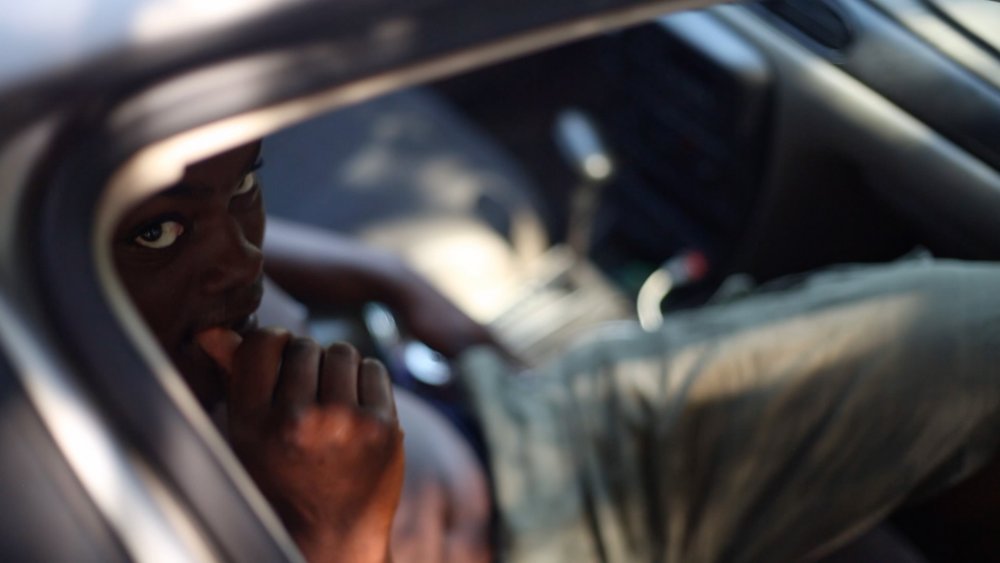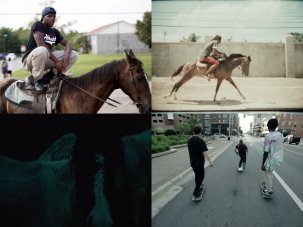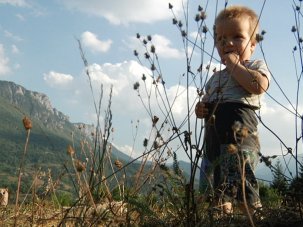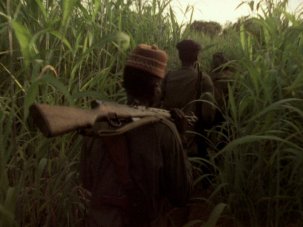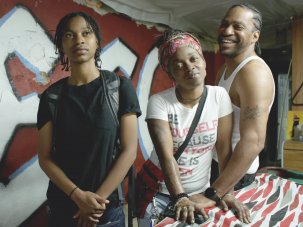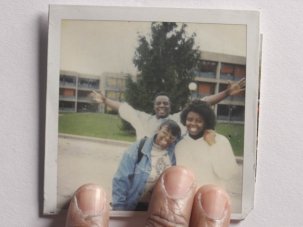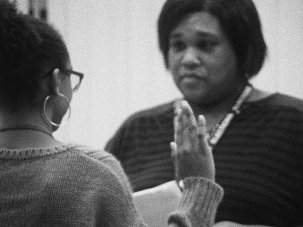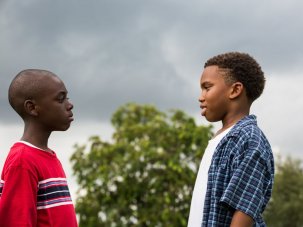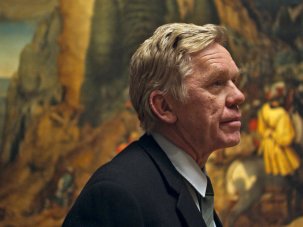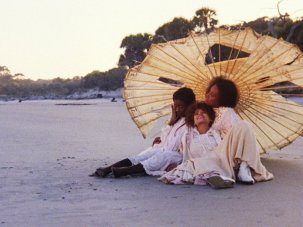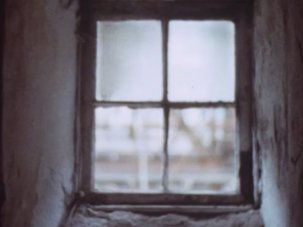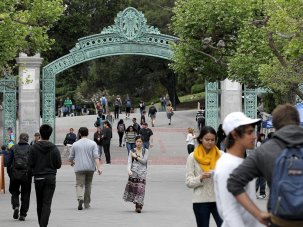Where does time reside?
Hale County This Morning, This Evening is presented and distributed in the UK by the ICA from 18 January 2019.
These words appear on screen after an hour of RaMell Ross’s Hale County This Morning, This Evening, encapsulating the grammar and presence of his personal but open portrayal of Hale County, Alabama. The question perhaps also counters a snap description of this film as fragmentary or broken time: is experienced time linear? Is time something externally measured? Are the the mundane moments between events observed with equal measure? How is time remembered? How can recorded images be arranged by a filmmaker to best represent their own experience of that time to an audience?
From the opening text card – “I began filming, using time to figure out how we’ve come to be seen” – Ross defines the intention of his film as a personal, patient endeavour to recognise and tilt the frame of representation through which African American lives are projected. Hale County This Morning, This Evening is directed, written, filmed and edited by Ross. It is a condensed extraction of 80 minutes from 1,300 hours of footage, almost 54 days of an open camera aperture, dispersed over five years. It feels like a film in the moment, a daydream in the present, not a spliced reverie of the past.
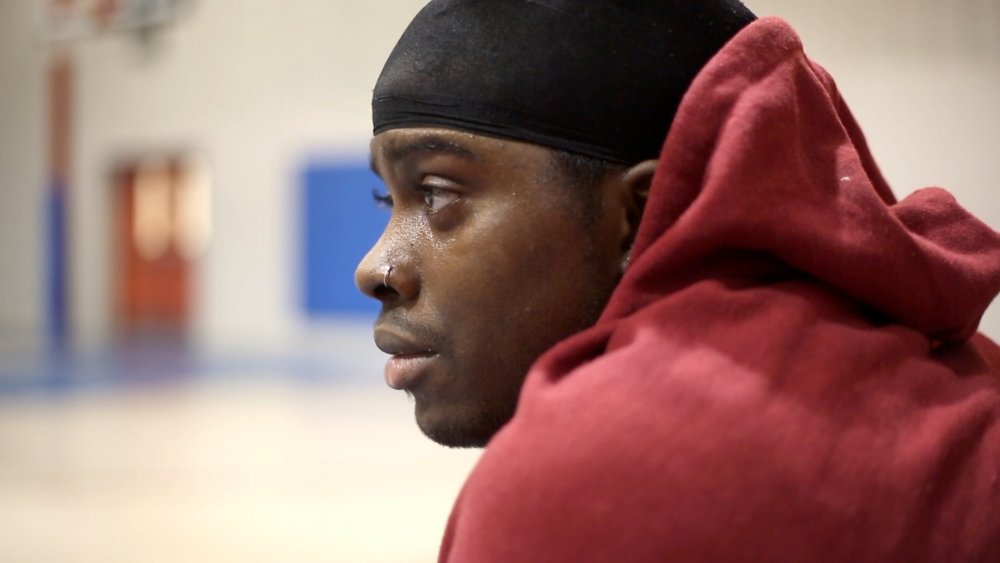
The film loosely portrays three lives in the Alabama Black Belt, a region in southern United States of America named after the richness of its topsoil, and known for the economic poverty of its inhabitants. One considered frame follows another in the lives and landscapes of Latrenda ‘Boosie’ Ash, Quincy Bryant and Daniel Collins.
The stream of arranged images is held together by a singular sensibility over time, without interruption from filmic conventions such as characterisation, analytical scene logic or continuity of chronology. Though we witness major life moments of birth and death, Ross shows no desire to focus on a single storyline or arc, to move the film forward. The impression of each protagonist is sculpted through the cubism of Ross’s recording presence over time. His images take us into the fabric of daily rituals, ranging from domestic and personal moments to institutional spaces of church, college, ball games and exterior occurrences of encountered beauty: thick black tyre smoke diffusing sharp sunlight, a dazed deer struggling in the street, sunsets, storms. They’re sometimes banal, often sublime; day cuts to night, morning to evening and back again.
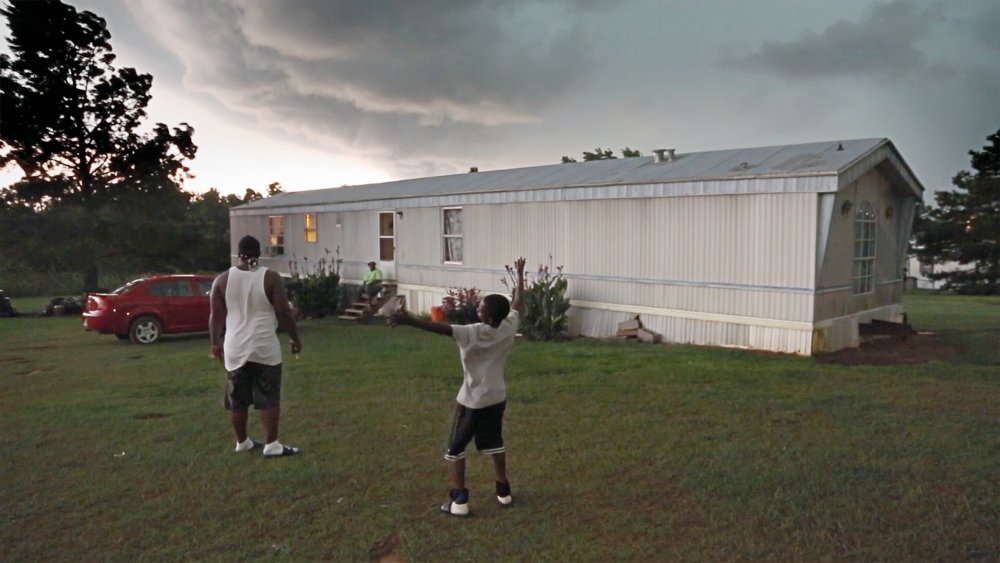
Throughout, Ross’s background as as photographer is evident. The value of a static frame is recognised, with a heightened focus on the way each image can convey a paradigm of meaning. This manifests in an undulance of discovering glances, intentioned, distracted, interacting and often dreaming, emanating an overwhelming feeling of being present. In breaking away from traditional linear form and allowing reflection, Ross has created a filmic experience just as fluid as lived life can be. His composition of sight traces formal attributes of earlier photographic works, using the frame to crop bodies in a landscape, spatially isolating small gestures or movements.
Often shooting from a seated or eye-level position, Ross physically removes the possibility of hierarchical relations, or looking down on his protagonists. There’s a certain introverted composure to his klens, often observing the world from a static position, allowing phenomena to be, and to be analysed, without interrogation: looking, staring, reflecting, not approaching. Each of these glimpses evoke hours; time resides between them. Although imbued with this sense of a singular point of view, scenes are never staged; they are always planted in Ross’s perspective on occurring phenomena.
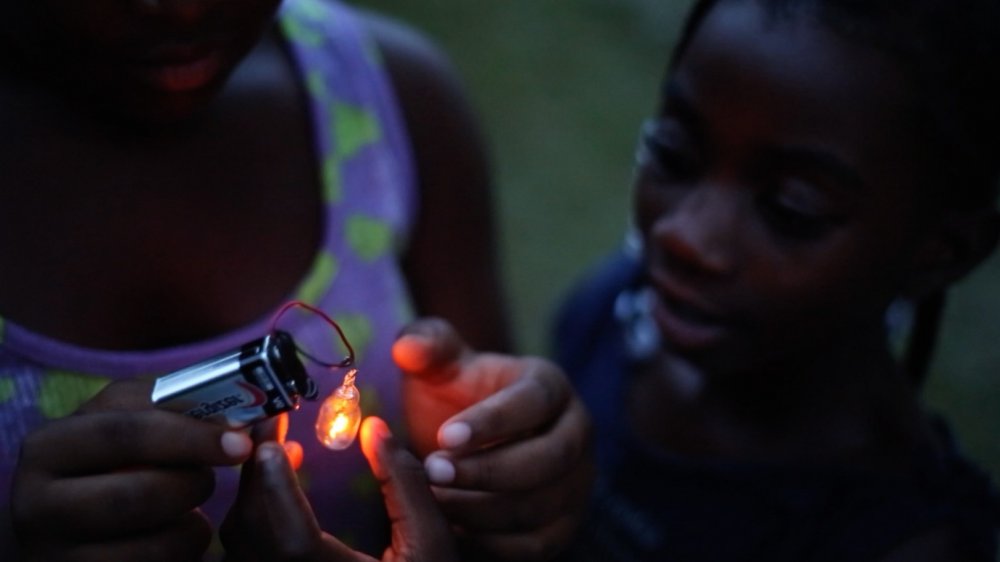
In recent nonfiction cinema the notion of an embodied lens has commonly been depicted as a sensory lens, a purely physical presence, but here the camera also communicates a psychic or perceptual navigation of the director’s milieu. A shot that might serve as a cutaway in more linear nonfiction narratives features as an extended moment, a pensive scene. Sometimes you can see the world differently just by sitting still and taking the time to look at it.
The Venn diagram of voyeuristic, touristic, ethnographic, immersive and transportive modes is a difficult circle-pit to dance for documentary and although Ross is clearly recording from within a community he is not part of it. In a county of fewer than 15,000 inhabitants anonymity and irresponsibility are not options for a filmmaker. As close as he is to his protagonists, the fact that Ross is not from Alabama lends a quality of everyday discovery to his images, an appreciation of the landscape that is often lost or valued in established terms through familiarity.
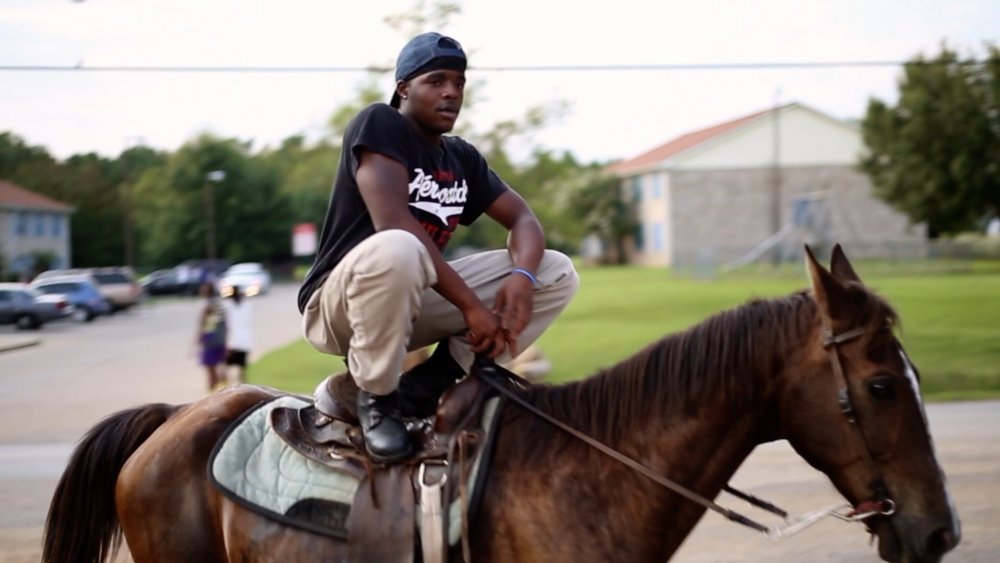
The montage is arranged by variants of transition and punctuation, colours, movements, themes, symbolic associations. The presence of a wire connects one shot to the next; a blues session cuts to a conversation about worries and troubles; drips of sweat cut to drops of rain absorbed by the tiny pores of the concrete ground; the rhythm of Quincy’s son Kyrie running back and forth repeats in the movement of a basketball practice session and a bee circling on a metal surface. The technique rarely appears to be an equation and the accumulation of different associations as a whole serves to reflect back on Ross’s first-person characteristics: what he is seeing, what he is thinking, what he is trying to discover?
Finding moments of significance, re-evaluating and assembling space, time and images from such an abundance of personally experienced material is a challenge, particularly for an artist making his first feature-length film. The film credits an admirable supporting team including artist Maya Krinsky as co-writer, Apichatpong Weerasethakul as creative advisor and Joslyn Barnes as producer. (Barnes’s resumé include two more celebrated non-linear documentaries of recent years, also crafted from a surfeit of material, Concerning Violence (2014) and Cameraperson (2016).)
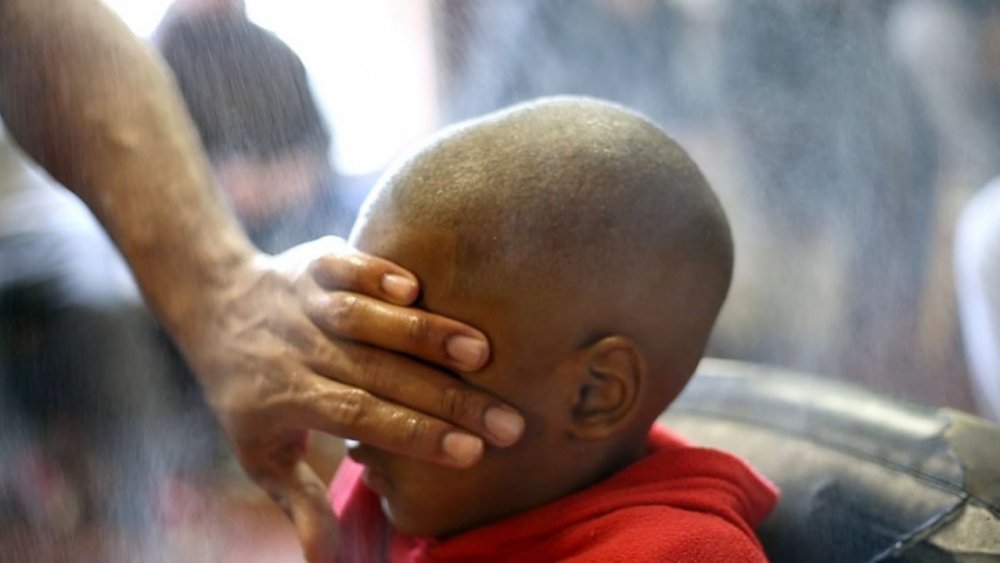
Historically the term ‘fragmentary’ in nonfiction film has been shorthand for avant-garde work of a particular cultural canon: abstract, poetic diaries, sometimes difficult to follow, and shot on portable analogue film cameras. The origins of this style, the glances around a room, around a scene, may have been dictated by economy of means and technologically imposed chronology: film was expensive, resulting in a language of temporal leaps, an economy of looking.
Though culturally and geographically distant in subject matter there are certain traces of the rhythm experienced in Hale County This Morning, This Evening in the diaristic work of Jem Cohen, Jonas Mekas and Margaret Tait. Ross’s work may also be situated as a tangent in a new aesthetic tradition, a wave of black American filmmakers operating between art and film spheres, confronting the political reality through personal and new nonfiction languages: Ephraim Asili, Ja’tovia Gary, Martine Syms, Kevin Jerome Everson, Arthur Jafa and Leilah Weinraub. Hale County This Morning, This Evening is perhaps the first of this wave to break into traditional documentary spheres of cinema by launching at the Sundance Film Festival, receiving a Grand Jury nomination at Sheffield Doc/Fest and picking up theatrical release in the US and UK.
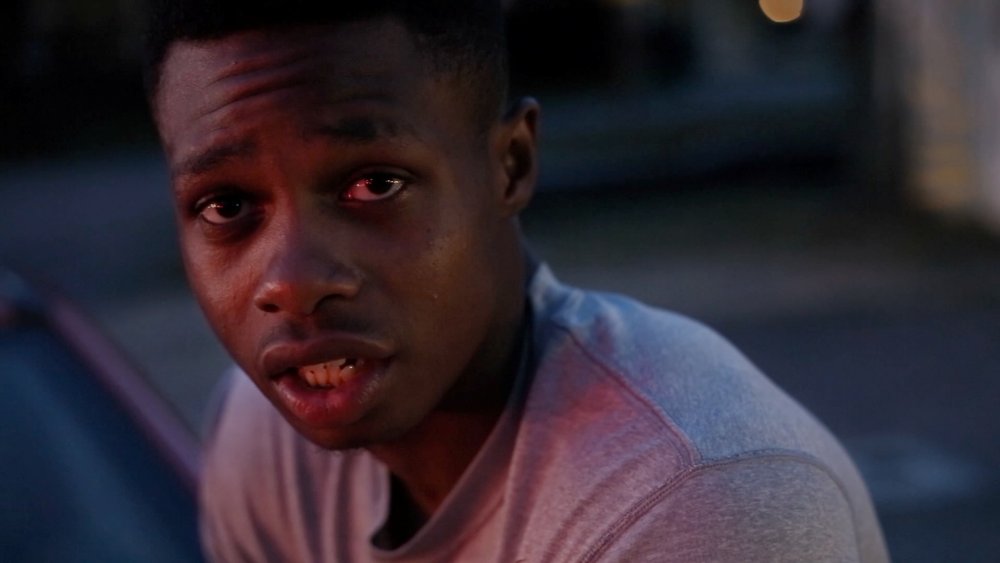
The observational mode of this film runs parallel to the recent direction of new and established nonfiction filmmakers revaluing the direct record with an anxiety for the real, and a renewed sense of appreciation for veterans of this filmmaking mode such as Frederick Wiseman, Anand Patwardhan and Claire Simon. However the vision of Ross’s work takes a non-linear, subjective position, a desire to reassert authentic and mutual understanding, to offer empirical truth, bypassing manipulation and dramatisation. This comes after waves of positive uncertainty ‘blurring’ and hybridising nonfiction parameters, and is perhaps one symptom of art’s reaction to an epidemic of factual relativism, fakery and brazen boasts of propaganda, simultaneously known to be exaggerated but accepted through allegiance.
Depicting an American locale rarely seen in commercial media, particularly outside the US, the film has a Rorschach quality, simultaneously revealing of the viewed image and the viewer’s sense of distance from or connection with such images. This happens when documentaries address cultures so commonly misrepresented in mainstream media, whether through glamorised and exoticised images or demonising propaganda. There’s a simultaneous undoing and reconstructing of the subject’s image, asking the question “How have we come to be seen?” as screen protagonists and simultaneously interrupting the expectation of “How we have come to see?” as audiences with filmic expectations of historically dominant story forms. There may not yet be a technology of sharing consciousness, but Ross’s images take a leap toward shifting and sharing a sensibility.
In the January/February 2019 issue of Sight & Sound
Interview: Hale County This Morning, This Evening
RaMell Ross’s superb documentary makes the ordinariness of black lives feel extraordinary. Interview by Kelli Weston.
+ review by Hannah McGill
-
The Digital Edition and Archive quick link
Log in here to your digital edition and archive subscription, take a look at the packages on offer and buy a subscription.




